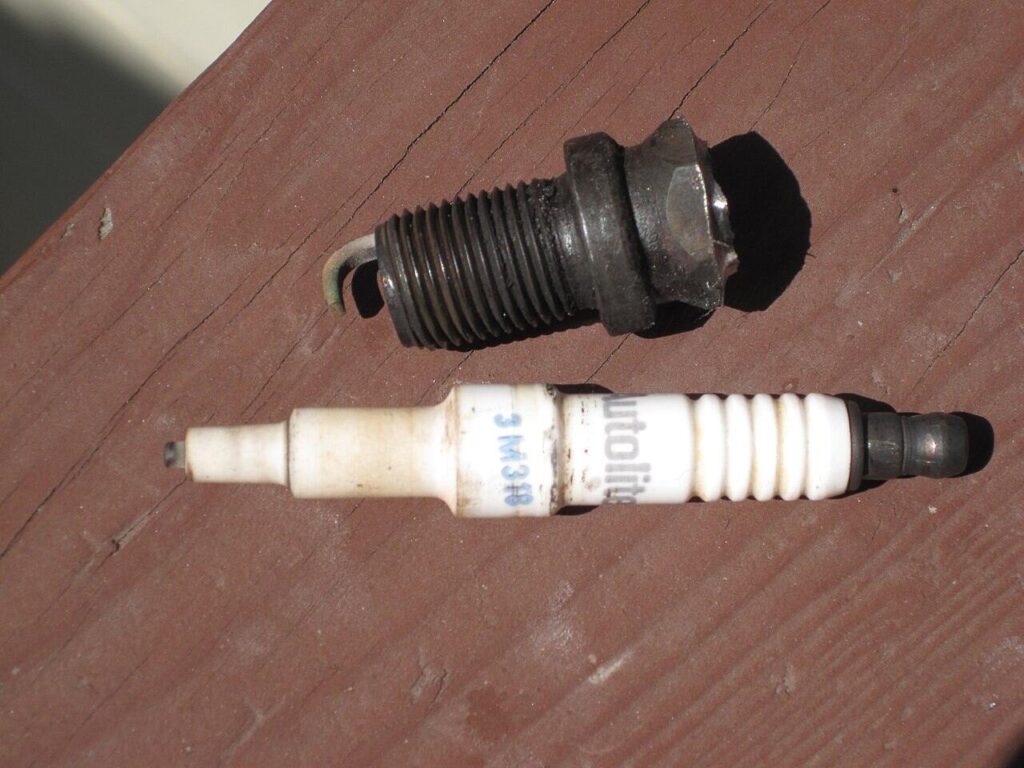Engine Plugs: A Simple Guide
Maintaining a vehicle is essential for ensuring its longevity and performance. One of the key components in this maintenance routine are the engine plugs. Spark plugs play a critical role in the combustion process, igniting the air-fuel mixture in the engine’s cylinders. Over time, these small but vital parts can become worn or dirty, leading to performance issues. In this article, we will discuss when to replace or clean engine plugs, the signs that indicate they need attention, and how to perform these tasks effectively.

Index
Understanding Engine Plugs
Spark plugs are responsible for igniting the air-fuel mixture in an internal combustion engine. They consist of a central electrode, an insulator, and a ground electrode. When the ignition coil sends an electric current to the spark plug, it generates a spark that ignites the mixture, producing the energy needed to power the engine. Understanding how these components work together can help vehicle owners recognize when maintenance is necessary.
Signs Your Engine Plugs Need Attention
- Poor Engine Performance
One of the most noticeable signs that your plugs may need replacing is a decrease in engine performance. If you experience rough idling, hesitation during acceleration, or difficulty starting the engine, it may be time to inspect your plugs. Worn or dirty plugs can lead to incomplete combustion, resulting in decreased power and efficiency. - Increased Fuel Consumption
If you notice that your vehicle is consuming more fuel than usual, this can also indicate that your spark plugs are not functioning optimally. Inefficient combustion caused by worn spark plugs leads to unburned fuel, which can cause your vehicle to burn more fuel to maintain performance. Keeping an eye on your fuel consumption can help you catch potential spark plug issues early. - Engine Misfires
An engine misfire occurs when one or more cylinders fail to fire properly. This can be caused by a variety of issues, but faulty engine plugs are a common culprit. If you hear a sputtering sound, feel a lack of power, or notice the check engine light illuminating, it could be a sign of a misfire related to your spark plugs. - Hard Starting
If your vehicle is having difficulty starting, it could be a sign of spark plug issues. A worn or fouled spark plug may not provide the necessary spark to ignite the fuel-air mixture, leading to hard starts. If you find yourself cranking the engine for an extended period before it finally starts, it’s time to check the condition of your plugs. - Rough Idling
A smooth-running engine should idle evenly. If your engine is vibrating or running roughly while at a stop, it may be due to faulty spark plugs. This issue can lead to a decrease in overall performance and efficiency, making it essential to address it promptly. - Physical Inspection
Regularly inspecting your plugs can help you identify any potential issues before they escalate. Remove the plugs from the engine and inspect them for signs of wear, carbon buildup, or damage. A healthy plug should have a light tan or gray color on the insulator and no excessive wear on the electrodes. If you notice any significant buildup or damage, it may be time to replace them.
When to Replace Engine Plugs
The lifespan of spark plugs varies depending on several factors, including the type of plug, the make and model of the vehicle, and driving conditions. Here are some general guidelines on when to replace plugs:
- Follow Manufacturer Recommendations
Always refer to your vehicle’s owner’s manual for specific recommendations regarding spark plug replacement intervals. Most manufacturers suggest replacing standard copper plugs every 30,000 to 50,000 miles. In contrast, platinum or iridium engine plugs can last up to 100,000 miles. Adhering to these guidelines can help you maintain optimal engine performance. - After Engine Modifications
If you have made modifications to your engine, such as installing a performance air intake or exhaust system, you may need to replace or adjust your plugs. Modifications can change the engine’s air-fuel mixture, leading to a need for different plug types or gaps. - High-Performance Driving
If you regularly engage in high-performance driving, such as racing or towing heavy loads, your plugs may wear out more quickly. In these cases, it’s advisable to check them more frequently and replace them as needed. - Signs of Wear or Damage
As mentioned earlier, performing a physical inspection of your spark plugs can help you determine if they need replacement. If you see significant carbon buildup, cracks, or corrosion, it’s time to replace them, regardless of mileage.
How to Clean Engine Plugs
Cleaning engine plugs can sometimes restore their functionality and extend their life. Here’s a step-by-step guide on how to clean spark plugs effectively:
- Gather Your Tools
You will need a spark plug socket, ratchet, a wire brush or abrasive cleaner, and a plug gap tool. - Remove the Engine Plugs
Make sure the engine is cool. Disconnect the battery for safety, then remove the plug wires or ignition coils. Use the plug socket to carefully unscrew and remove the plugs from the engine. - Inspect the Spark Plugs
Before cleaning, inspect each spark plug for signs of wear or damage. If they are heavily worn or damaged, it may be better to replace them instead of cleaning. - Clean the Spark Plugs
Using a wire brush or abrasive cleaner, gently clean the electrodes and insulator to remove any carbon buildup or deposits. Be careful not to damage the electrodes during the cleaning process. - Check the Gap
After cleaning, use a plug gap tool to check and adjust the gap as needed. The correct gap specifications can be found in your vehicle’s owner’s manual. - Reinstall the Spark Plugs
Reinstall the cleaned plugs into the engine, ensuring they are tightened to the manufacturer’s specifications. Reconnect the plug wires or ignition coils and reconnect the battery.
The Importance of Regular Maintenance
Maintaining your plugs is just one part of a comprehensive vehicle maintenance routine. Regular inspections, timely replacements, and proper cleaning can help ensure that your engine runs smoothly and efficiently. Neglecting spark plug maintenance can lead to a range of issues, including poor fuel efficiency, reduced engine performance, and increased emissions.
Regular maintenance not only extends the life of your plugs but also helps identify other potential issues within your engine. Taking proactive steps to care for your vehicle can save you money in the long run and enhance your driving experience.
Conclusion
In summary, engine plugs play a crucial role in the performance and efficiency of your vehicle. Recognizing the signs that your plugs need attention, knowing when to replace or clean them, and performing regular maintenance are key to keeping your engine running smoothly. By staying informed and proactive about your vehicle’s spark plugs, you can ensure a reliable and enjoyable driving experience for years to come.
Want to read more about vehicle maintence? Click here and read more.
